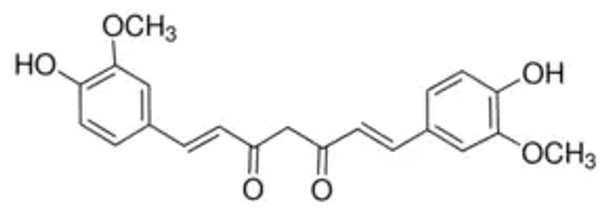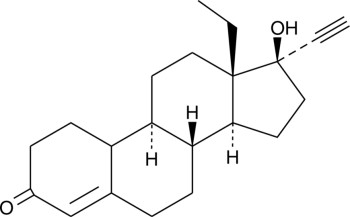Curcumin, (curcuminoid content), (Curcumin), 500MG
Description
Curcumin, ≥94% (curcuminoid content), ≥80% (Curcumin), 500MG
≥94% (curcuminoid content), ≥80% (Curcumin)
Synonym(s):
Diferulylmethane, (E,E)-1,7-bis(4-Hydroxy-3-methoxyphenyl)-1,6-heptadiene-3,5-dione, Diferuloylmethane, Natural Yellow 3
Linear Formula:
[HOC6H3(OCH3)CH=CHCO]2CH2
CAS Number:
458-37-7
Molecular Weight:
368.38
Colour Index Number:
75300
Beilstein:
2306965
EC Number:
207-280-5
MDL number:
MFCD00008365
PubChem Substance ID:
24892983
NACRES:
NA.47
PROPERTIES
Quality Level
200
vapor density
13 (vs air)
assay
≥80% (Curcumin)
≥94% (curcuminoid content)
form
powder
mp
175 °C
solubility
ethanol: 1 mg/mL
DMSO: >11 mg/mL
0.5 M NaOH: soluble (then immediately diluted in PBS)
storage temp.
−20°C
SMILES string
COc1cc(\C=C\C(=O)CC(=O)\C=C\c2ccc(O)c(OC)c2)ccc1O
InChI
1S/C21H20O6/c1-26-20-11-14(5-9-18(20)24)3-7-16(22)13-17(23)8-4-15-6-10-19(25)21(12-15)27-2/h3-12,24-25H,13H2,1-2H3/b7-3+,8-4+
InChI key
VFLDPWHFBUODDF-FCXRPNKRSA-N
Gene Information
human ... APP(351) , CYP1A2(1544)
General description
Curcumin is a yellow colored polyphenol obtained from the rhizome of Curcuma longa L. It is also known as diferuloyl methane, a symmetric molecule with a seven carbon linker connecting two o-methoxy phenolic groups containing aromatic rings. Curcumin is synthesized by Pabon′s reaction using vanillin and acetyl acetone in the presence of boric oxide. It constitutes an important part of various diets and herbal medicines, especially in the Asian continent for its various salubrious effects on human health.
Application
Curcumin has been used:
- to study its in vitro effect on the inflammation and expression of tumour factor in patients with chronic kidney diseases
- to determine its influence when used in combination with high frequency ultrasound on human cervical carcinoma cells
- to study the possibility of using magnetic purification of curcumin from Curcuma longa by surface active maghemite nanoparticles (SAMNs)
- to examine its effect on the amyloid-β peptide levels along with the maturation of amyloid-β precursor proteins in various cell lines and primary cortical neurons in mouse
- as a supplement to evaluate its anti-carcinogenic and anti-apoptotic effect on cancer cells and cardiomyocytes
- to test its anti-inflammatory effect in human promyelocytic leukemia cell line, the HL-60
Packaging
500 mg in poly bottle
Biochem/physiol Actions
A natural phenolic compound. Potent anti-tumor agent having anti-inflammatory and anti-oxidant properties. Curcumin has been cited as a potential chemopreventive agent, in addition to its chemotherapeutic activity. Induces apoptosis in cancer cells and inhibits phorbol ester-induced protein kinase C (PKC) activity. Reported to inhibit production of inflammatory cytokines by peripheral blood monocytes and alveolar macrophages. Potent inhibitor of EGFR tyrosine kinase and IκB kinase. Inhibits inducible nitric oxide synthase (iNOS), cycloxygenase and lipoxygenase. Easily penetrates into the cytoplasm of cells, accumulating in membranous structures such as plasma membrane, endoplasmic reticulum and nuclear envelope.
Curcumin is postulated to have anti-depressant, anti-stress and neuroprotective effects on humans and other animals. Additionally, it also shows anti-fungal, antiviral, anti-microbial, chemosensitizing, radiosensitizing, and wound healing activities.
SAFETY INFORMATION
Storage Class Code
13 - Non Combustible Solids
WGK
WGK 3
Flash Point(F)
Not applicable
Flash Point(C)
Not applicable





